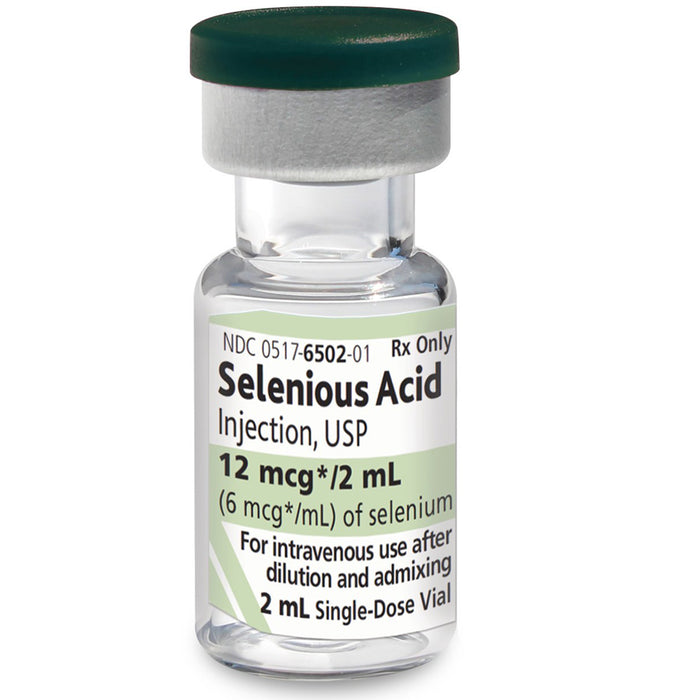Selenious Acid Injection 12 mcg/ 2 mL Single-Dose Vials 2 mL x 10/Tray by American Regent (Rx)
(Note: We don’t Fill Personal Prescriptions)
How to Order:
Selenious Acid Injection is a sterile solution intended for intravenous use as a supplement to Total Parenteral Nutrition (TPN) to prevent selenium deficiency in adults and pediatric patients. Here are the details for the Selenious Acid Injection with the concentration of 12 mcg/2 mL, produced by American Regent:
Product Name: Selenious Acid Injection
Concentration: 12 mcg/2 mL
Formulation: Single-Dose Vials
Volume: 2 mL per vial
Packaging: 10 vials per tray
Indications and Usage:
Purpose: Used as a supplement to parenteral nutrition solutions to provide the recommended daily allowance of selenium in patients at risk of developing a deficiency, particularly in those on TPN.
Composition:
Active Ingredient: Selenious Acid, which provides selenium in the form of selenite.
Concentration: Each vial contains 12 micrograms (mcg) of selenium in a selenious acid solution.
Administration:
- Selenious Acid Injection is administered intravenously, and dosage is determined based on individual patient needs, often according to the selenium levels in the patient's blood and the clinical condition.
- It is typically mixed with TPN solutions for infusion.
Precautions:
-
Allergies: Patients with allergies to selenium or any component of the injection should avoid use.
-
Overdose: Excessive selenium can lead to toxicity known as selenosis, vomiting, nail changes, and other systemic effects.
- Monitoring: Periodic assessment of selenium levels and overall nutritional status is recommended.
Storage:
Conditions: Store at controlled room temperature and protect from light.
Handling: Use aseptic technique when transferring from the vial to the parenteral solution. Discard any unused portion.
Manufacturer:
Produced by: American Regent, a company known for providing high-quality injectables and parenteral nutrition products.
Always consult with a healthcare professional for specific dosing recommendations and potential interactions with other medications the patient may be receiving.



